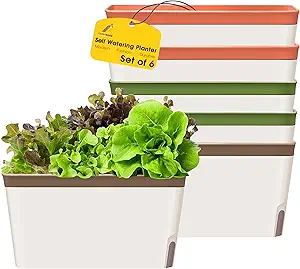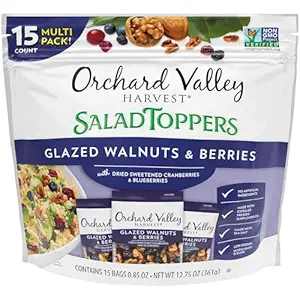Irresistible Guide: How to Grow Salad Indoors All Year Long

Some of the links in this post are affiliate links. As an Amazon Associate, we earn a referral fee from qualifying purchases—at no extra cost to you.
If you’ve ever dreamed of picking fresh greens right from your kitchen counter, you’re in the right place. Learning how to grow salad indoors isn’t just possible—it’s surprisingly easy, super satisfying, and downright addictive. Imagine enjoying a crispy bowl of homegrown salad even when snow blankets the ground outside. Tempted yet?
Let’s dive into everything you need to know to grow salad indoors, step by step.
Table of Contents
Why You Should Grow Salad Indoors Today
Growing your own salad greens indoors means fresher flavor, zero pesticides, and no sad, wilted bags from the grocery store. Plus, it’s ridiculously convenient. No yard? No problem. Even a sunny windowsill can turn into your personal salad bar. Besides, indoor gardening is incredibly therapeutic. It’s like having a mini nature retreat right inside your home—minus the bugs and bad weather.
What Makes Indoor Salad Gardening So Rewarding?
When you grow salad indoors, you’re not just cultivating lettuce—you’re cultivating freedom. You’re breaking free from overpriced organic greens and gaining control over what ends up on your plate. Every harvest brings a burst of fresh, crisp flavor that store-bought produce just can’t match. And best of all, no more soggy, forgotten bags of greens wilting away in your fridge.
The Best Salad Greens for Indoor Gardening
Not all greens are created equal when it comes to indoor growth. But don’t worry—we’ve got the best ones for you right here.
Leafy Legends: Lettuce Varieties That Thrive Indoors
- Butterhead
- Romaine (baby varieties work best)
- Loose-leaf (like Red Sails or Black Seeded Simpson)
Loose-leaf lettuces are superstars indoors. They don’t need deep soil, they regrow after cutting, and they taste amazing.
Add Some Crunch: Growing Arugula, Spinach, and Kale Inside
Arugula grows quickly and adds a spicy, peppery kick that livens up any salad. Spinach prefers cooler temperatures and develops into lush, bushy leaves. Kale stands out as the tough, nutrient-packed superstar of leafy greens. All three thrive indoors when given a bit of care and steady light, making them perfect choices for your indoor garden.
Must-Have Supplies to Grow Salad Indoors
You don’t need a greenhouse to succeed. Here’s what you do need:
Choosing the Perfect Indoor Planter or Container
- Shallow containers (4–6 inches deep)
- Drainage holes are a must
- Bonus: Self-watering containers reduce watering stress
Want a neat hack? Reuse takeout containers or baking trays—just poke holes in the bottom and you’re golden.
For growing indoor salads, choose a lightweight organic potting mix made for vegetables—avoid garden soil, which is too heavy and may carry pests. Look for blends that include perlite or coco coir to ensure proper drainage and root health. Salad greens also need light fertilizing; use a balanced liquid fertilizer like 10-10-10 at half-strength every two weeks. This gentle feeding supports healthy, flavorful leaves without overstimulating growth.
The Ahopegarden Indoor Garden allows you to grow up to six plants at a time without soil, using energy-efficient LED grow lights and a simple control panel.
A sturdy, compact, and stylish self-watering container ideal for leafy greens. Prevents overwatering and keeps salad greens thriving indoors.
Step-by-Step Instructions to Grow Salad Indoors
Here’s the no-fail process for success:
Germinating Your Salad Seeds Like a Pro
- Moisten the soil (not soggy!)
- Sprinkle seeds about ½ inch apart
- Lightly cover with soil and mist
- Cover with plastic wrap or a humidity dome until sprouted
Expect sprouts in 3–7 days.
To transplant seedlings without stress, wait until they develop 2–3 true leaves before gently moving them from seed trays to larger containers—handle the roots with care, as they’re fragile. When it comes to watering your indoor salad garden, check the soil regularly and water only when the top inch feels dry. Use a spray bottle for delicate young sprouts and a watering can with a gentle flow for mature greens. Avoid overwatering, as soggy soil can quickly lead to root rot and unhealthy plants.
When watering young greens, a gentle stream is key. The Haws Handy Indoor Watering Can offers precise control and a soft flow, preventing soil disturbance and root damage.
To simplify seed sprouting, try the Burpee Seed Starting Greenhouse Kit. It comes with seed trays, a humidity dome, and grow pellets—ideal for jump-starting your salad garden indoors.
Harvesting Tips: When and How to Pick Salad Leaves
The best part? Harvest time! Use the cut-and-come-again method by snipping outer leaves when they reach 3–4 inches, leaving the center to regrow for continuous harvests. After picking, gently rinse and dry the leaves, then store them in an airtight container with a paper towel to absorb excess moisture. For the best flavor and crunch, enjoy your fresh indoor salad within 3–5 days.
After harvesting, rinse and dry your greens with the OXO Good Grips Salad Spinner. It quickly removes excess water while keeping delicate leaves intact, helping them stay fresh longer in the fridge.
Troubleshooting: Why Isn’t My Indoor Salad Thriving?
Yellow Leaves, Leggy Growth, or Stunted Plants
- Yellow leaves? Could be overwatering or nutrient deficiency
- Leggy plants? Not enough light
- Stunted growth? Check for poor soil or root-bound containers
Fix the root issue, and your salad garden will bounce back fast.
If your plants are growing tall and thin (aka leggy), they may need more light. The GE BR30 Full Spectrum LED Grow Light Bulb is an easy fix—it screws into any standard lamp and delivers sunlight-like brightness perfect for leafy greens.
Fun Ideas to Use Your Fresh Indoor Salad
Don’t just eat it—celebrate it!
DIY Salad Mixes Straight From Your Windowsill
- Sweet mix: Butterhead, spinach, baby kale
- Spicy mix: Arugula, mizuna, mustard greens
- Crunchy mix: Romaine, kale, red leaf
Pairing Indoor Greens With Dressings and Toppings
Top your fresh indoor salad with feta, seeds, dried cranberries, or roasted chickpeas for added texture and nutrition. A simple homemade vinaigrette—like olive oil, vinegar, and a touch of honey—elevates the flavor beautifully. These finishing touches turn your greens into a satisfying, gourmet meal. With endless topping options, every salad feels fresh and exciting.
Add crunch and flavor with the Orchard Valley Harvest Glazed Walnuts and Berries Salad Toppers, a ready-made blend of roasted seeds, dried cranberries, and nuts that pairs perfectly with homegrown greens.
Start Growing Your Own Indoor Salad Today!
Growing salad indoors is like having your own personal farmer’s market just steps from your kitchen. It’s a rewarding and healthy habit that brings fresh flavor to your meals year-round. Best of all, it’s simpler than you might expect—no backyard or fancy setup required. Whether you’re in a high-rise apartment or a cozy house, you can start your indoor salad adventure today.
Don’t wait for spring. Make your windowsill the tastiest spot in your home—year-round.
FAQs – Grow Salad Indoors
1. Can I grow salad indoors without any natural sunlight?
Yes, you can grow salad entirely under artificial light. Full-spectrum LED grow lights mimic sunlight and provide all the necessary wavelengths for photosynthesis. Just ensure your lights are on for 12–16 hours a day to replicate natural daylight, especially in rooms without windows.
2. What temperature is best for growing salad greens indoors?
Salad greens like lettuce, arugula, and spinach prefer cooler indoor temperatures, ideally between 60°F and 70°F (15°C to 21°C). If your indoor space gets too hot, especially near grow lights, consider using a small fan to circulate air and prevent wilting or bolting.
3. How often should I fertilize my indoor salad garden?
Feed your salad greens every 2 to 3 weeks with a balanced liquid fertilizer diluted to half strength. Over-fertilizing can lead to overly soft leaves or bitter flavors, so moderation is key. Organic options like fish emulsion or compost tea also work well for consistent growth.
4. Is it possible to regrow salad greens from kitchen scraps?
Yes, certain greens like romaine lettuce can regrow from the base. Place the root end in a shallow dish of water with some light, and you’ll see new leaves emerge in a few days. While this method won’t produce full heads, it’s a fun and sustainable way to grow extra greens.
5. Can I grow salad indoors year-round without taking breaks?
Absolutely. With consistent lighting, temperature, and care, salad greens can be grown in successive cycles year-round. To keep a steady supply, stagger your plantings every 1–2 weeks so you always have fresh leaves ready to harvest.
Other Useful Resources Related To Grow Salad Indoors
- Mother Earth News – Growing Salad Greens Indoors Year-Round
This article introduces Peter Burke’s method for cultivating salad greens indoors throughout the year, emphasizing soil sprouting techniques suitable for small spaces. (motherearthnews.com) - Better Homes & Gardens – 10 Steps for Growing Lettuce Indoors
A comprehensive guide outlining ten essential steps for successfully growing lettuce indoors, covering aspects like selecting the right containers, soil, lighting, and watering practices. (bhg.com) - Epic Gardening – Growing Lettuce Indoors: A Complete Guide
This resource offers detailed instructions on indoor lettuce cultivation, including tips on lighting, temperature control, and harvesting techniques to ensure a continuous supply of fresh greens. (epicgardening.com) - The Spruce – Growing Lettuce Indoors: A Complete Guide
An informative piece that discusses various methods for growing lettuce indoors, such as using seeds, starter kits, or propagating from leftovers, along with maintenance and harvesting advice. (thespruce.com) - Bright Lane Gardens – The Best Indoor Grow Lights For Hydroponic Lettuce
This article reviews top indoor grow lights suitable for hydroponic lettuce cultivation, providing insights into light spectrum, energy efficiency, and setup recommendations. (brightlanegardens.com)










